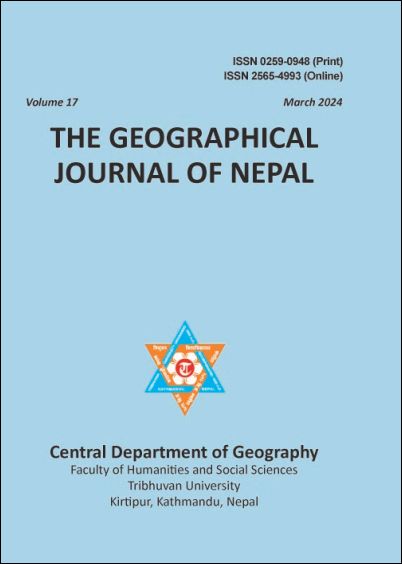Use of remittance and Coronavirus pandemic in Nepal
DOI:
https://doi.org/10.3126/gjn.v17i01.63943Keywords:
remittance, use of remittance, household welfare, Coronavirus pandemicAbstract
Remittance based economy of Nepal has been badly affected by the Corona virus pandemic. In this study, we analyze the household and social level use of remittance by the remittance recipient households before and after the pandemic. We adopted cross-sectional study design to collect data from 777 randomly selected respondents residing in Chautara Sngachwokgadhi (Mountain region), Galkot(Hill) and Mithila (Tarai) municipalities in Nepal. We used a reliable questionnaire tool having 0.8 cronbachalpha, and we visited the respondents from 6th June- 18th October 2022. The study found that the remittance recipient households have good access to households, educational, financial and health facilities. A significant amount of remittance also has been used to donate to the youth club, medical treatment seeker, school/college and community level (public moral hazard) after the Coronavirus pandemic. Remittance and agriculture were the major source of family income in each ecological region. However, remittance has failed to increase agriculture production and distributions (domestic household hazard) and also failed to increase entrepreneurship development in the local levels. This study can be a reference for developing evidence-based policies for minimizing public moral hazard and domestic household hazards caused by remittance in developing countries like Nepal.
Downloads
Downloads
Published
How to Cite
Issue
Section
License
Copyright (c) 2024 The Author(s)

This work is licensed under a Creative Commons Attribution 4.0 International License.
© Authors




